The University of Texas has begun leasing land for renewable energy, battery storage, and cryptocurrency data centers, creating a revenue source that barely existed five years ago.
Written by: Janet Lorin
Translated by: Luffy, Foresight News
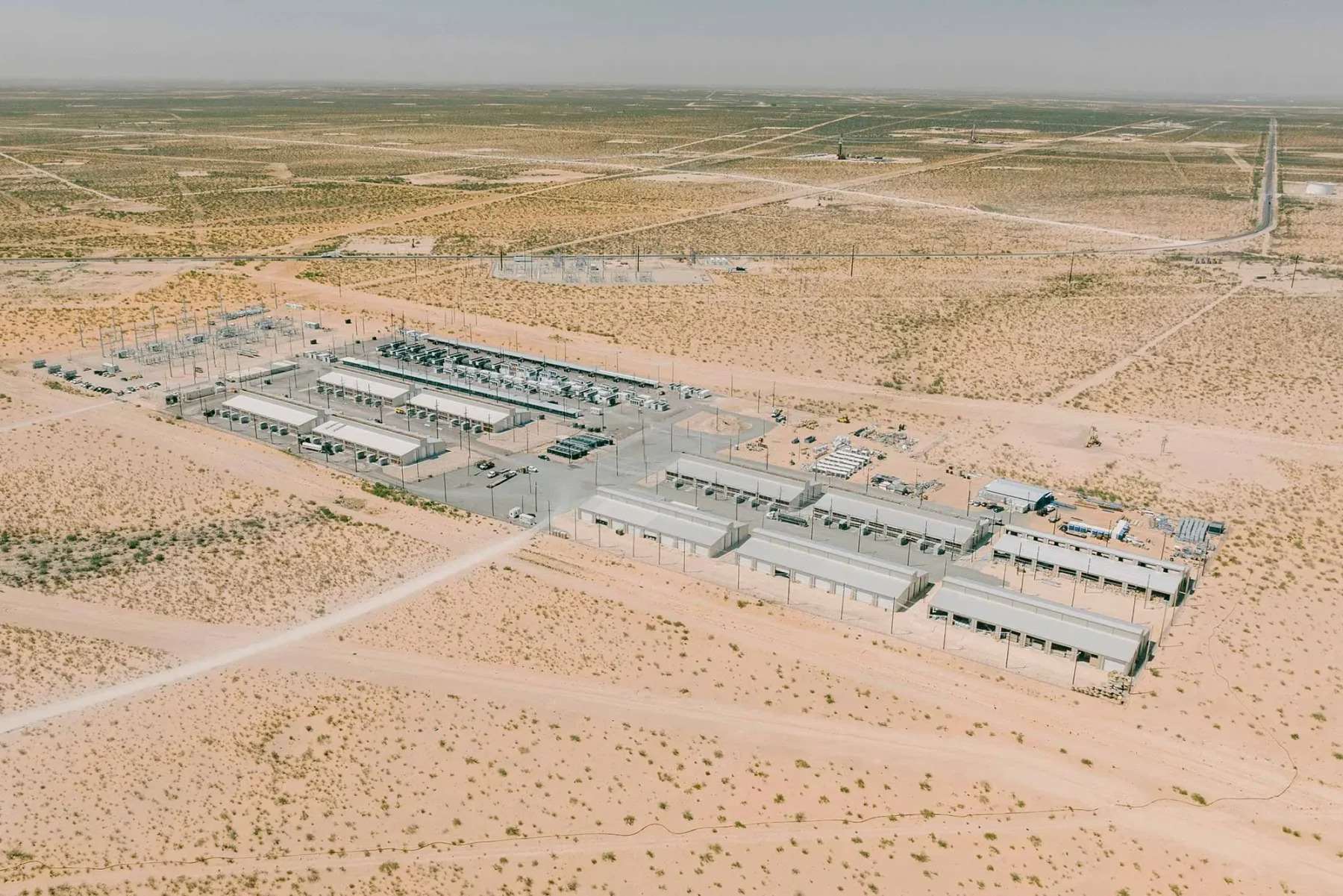
A cryptocurrency data center in Pionex, Texas, located on land leased from the University of Texas System.
Dozens of wind turbines stand tall against the desert sky, each as high as a 50-story building. A total of 800,000 solar panels cover a patch of scrubland, nearly the size of London Heathrow Airport. In a refrigerated cryptocurrency data warehouse, rows of computer servers emit a noisy hum, occupying an area equivalent to two city blocks in New York City. The University of Texas System manages the land beneath all these new projects, generating income for hundreds of thousands of students.
For a long time, the University of Texas System has relied on leasing rights to its vast mineral underground resources in the Permian Basin to generate revenue: extracting oil and gas from North America's richest deposits. And beneath the windmills and solar farms, pipelines stretching for miles delivering "liquid gold" remain key to its wealth. Thanks to record fossil fuel production and investment returns over the years, the University of Texas boasts a $47.5 billion endowment, ranking second in the higher education sector, only behind Harvard University.
However, the University of Texas System (which also manages land for Texas A&M University) is increasingly seeking to create more income from the ground. In addition to ground development projects that began decades ago: leasing rights for roads, power lines, and pipelines, as well as land use rights for grazing. The school now has new attempts: leasing land for renewable energy, battery storage, and cryptocurrency data centers, creating a revenue source that barely existed five years ago.
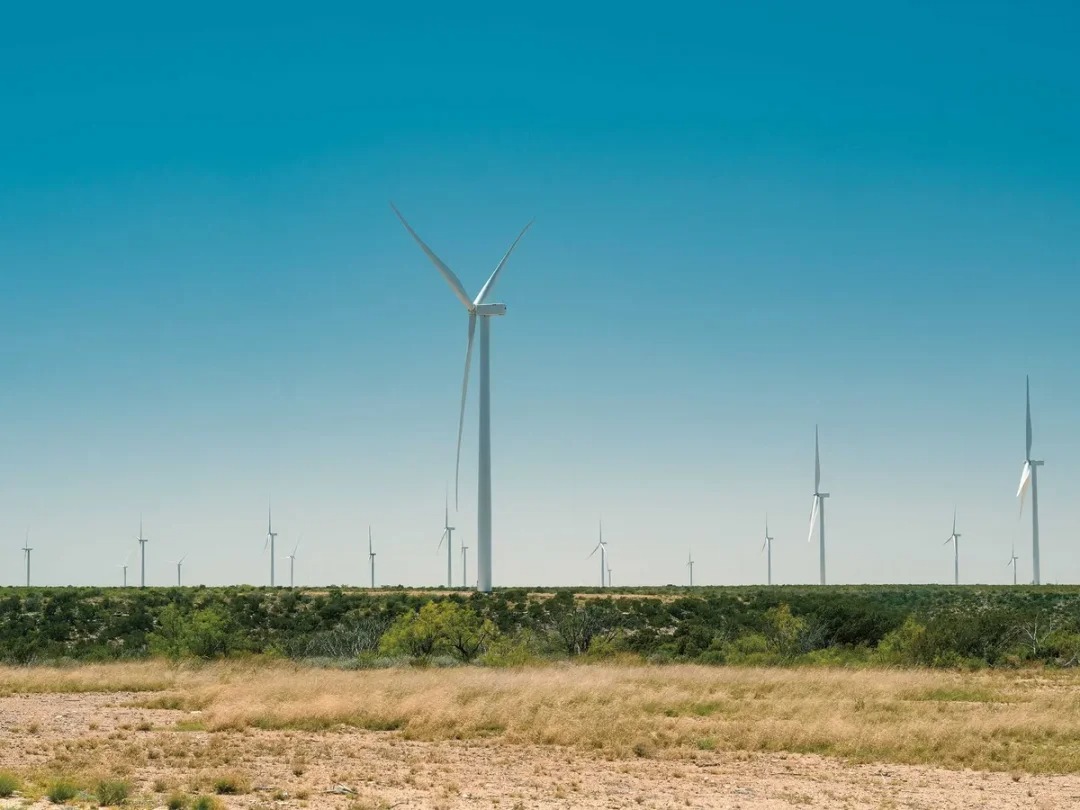
A wind farm in Rankin, Texas.
In the year ending last August, these ground-focused projects generated nearly $130 million in revenue. This is the highest amount ever, about five times that of 15 years ago. This revenue exceeded half of the scholarship and grant funding amount for the University of Texas at Austin (the state's flagship campus) that year.
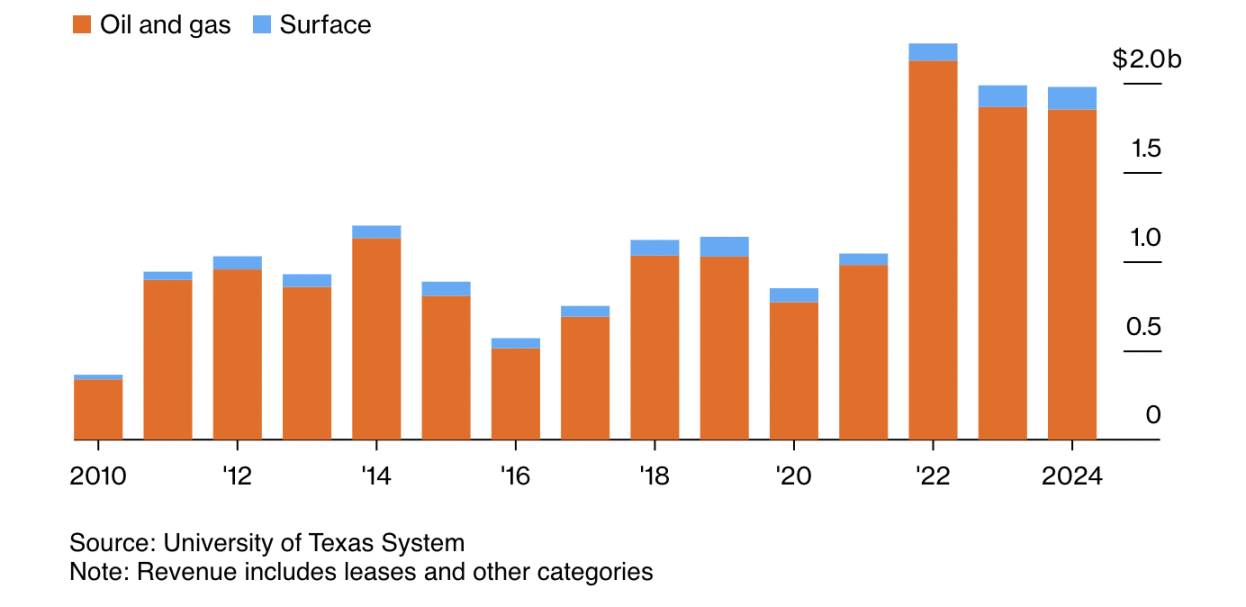
Revenue from land holdings of the University of Texas System (for the fiscal years ending August 31).
In May of this year, the University of Texas reached a preliminary agreement to lease 200,000 acres (10% of its land holdings) to Virginia-based Apex Clean Energy for wind and solar power generation. The company's clients include Meta, the parent company of Facebook, and the U.S. Army. Although financial details have not been disclosed, this will be the largest ground project deal for the University of Texas to date.
If such projects succeed, the University of Texas expects to add tens of millions of dollars in revenue annually over the coming decades. The school is seeking sites for large AI data centers, companies that help utilities and other entities prevent carbon emissions from entering the atmosphere, and natural gas power plants.
William Murphy Jr., CEO of University Lands (the department managing state-owned properties for the University of Texas), is trying to diversify the system's revenue. Some oil company CEOs have recently stated that U.S. production in the Permian Basin has reached or is nearing its peak. "Our mission is to create permanent income for the institution. We have a long-term vision, 30 to 50 years," Murphy said, "We see this as a marathon, and we are at the starting line."

William Murphy Jr., CEO of University Lands, in his Houston office.
The University of Texas's strategy comes at a time when renewable energy is under attack in Washington, D.C. To reverse the Biden administration's support for renewable energy, fossil fuel advocates, including President Donald Trump, have harshly criticized wind turbines, calling them ugly and unreliable. "Huge, ugly windmills — they ruin your community," he said in January.
Texas's mixed feelings about renewable energy may pose challenges to the University of Texas's plans. The state is the largest producer of wind energy in the U.S., with solar ranking second, just behind California. "We believe in an 'all-of-the-above' energy development approach," said Republican Governor Greg Abbott in December.
To support this strategy in the Permian Basin, the Texas Public Utility Commission approved a $10.1 billion plan in April to build three transmission lines to help meet the demands of oil drilling platforms, new data centers, cryptocurrency mining sites, and hydrogen plants. "Without these new transmission lines, no one would want to expand wind and solar supply in West Texas," said Ed Hirs, an energy economist at the University of Houston.
However, after a devastating winter storm in 2021 caused widespread blackouts, Texas Republicans blamed the grid's reliance on wind and solar energy. Studies found that failures in natural gas plants were the primary cause of the outages. Nevertheless, the Republican-controlled Texas legislature is still considering some bills that would make building solar and wind projects more expensive and difficult.
Murphy stated that if Texas officials move away from renewable energy, the University of Texas could change its strategy. For example, the University could support natural gas-driven projects. "If these incentives change, it could alter the landscape in West Texas," he said, "We are not a political entity, and we will not push anything."
Murphy's office in Houston is adorned with black-and-white photos of early oil drilling rigs, located near the headquarters of ConocoPhillips and Shell's major U.S. outpost. An old-fashioned oil pump's wooden wheel occupies a prominent spot in the office, towering twice as high as Murphy, indicating that the University of Texas still places great importance on making money from fossil fuels. "We plan to keep oil and gas around for a long time," said the 47-year-old Murphy, a fifth-generation Texan who was once an oil and gas lawyer and managed one of the state's largest cattle ranches.
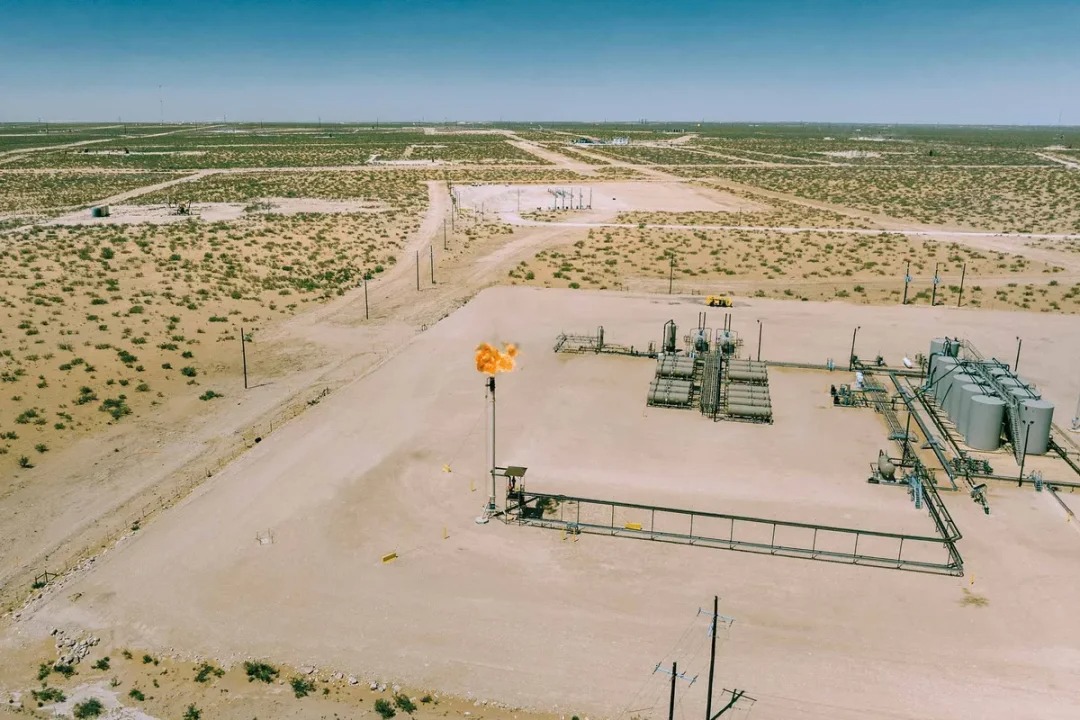
In Pionex, Texas, an operator burns off excess natural gas at a well on land managed by the University of Texas.
The University of Texas oversees 3,300 square miles of land in the Permian Basin, an area nearly the size of Delaware and Rhode Island combined, spanning 19 counties, centered around the famous oil town of Midland. In the 19th century, the state constitution granted mineral and surface extraction rights to the University of Texas. At that time, the arid land was considered nearly worthless except for grazing. But in 1923, drillers discovered oil, bringing wealth to Texas's higher education.
The University of Texas itself does not explore for oil or gas, nor does it develop any projects on state-owned land. It leases this land and charges royalties based on oil and gas production. Over the past 15 years, land leased to oil and gas companies has generated $15.8 billion in revenue. With rising prices and production, royalties have surged recently, generating over $2 billion annually.
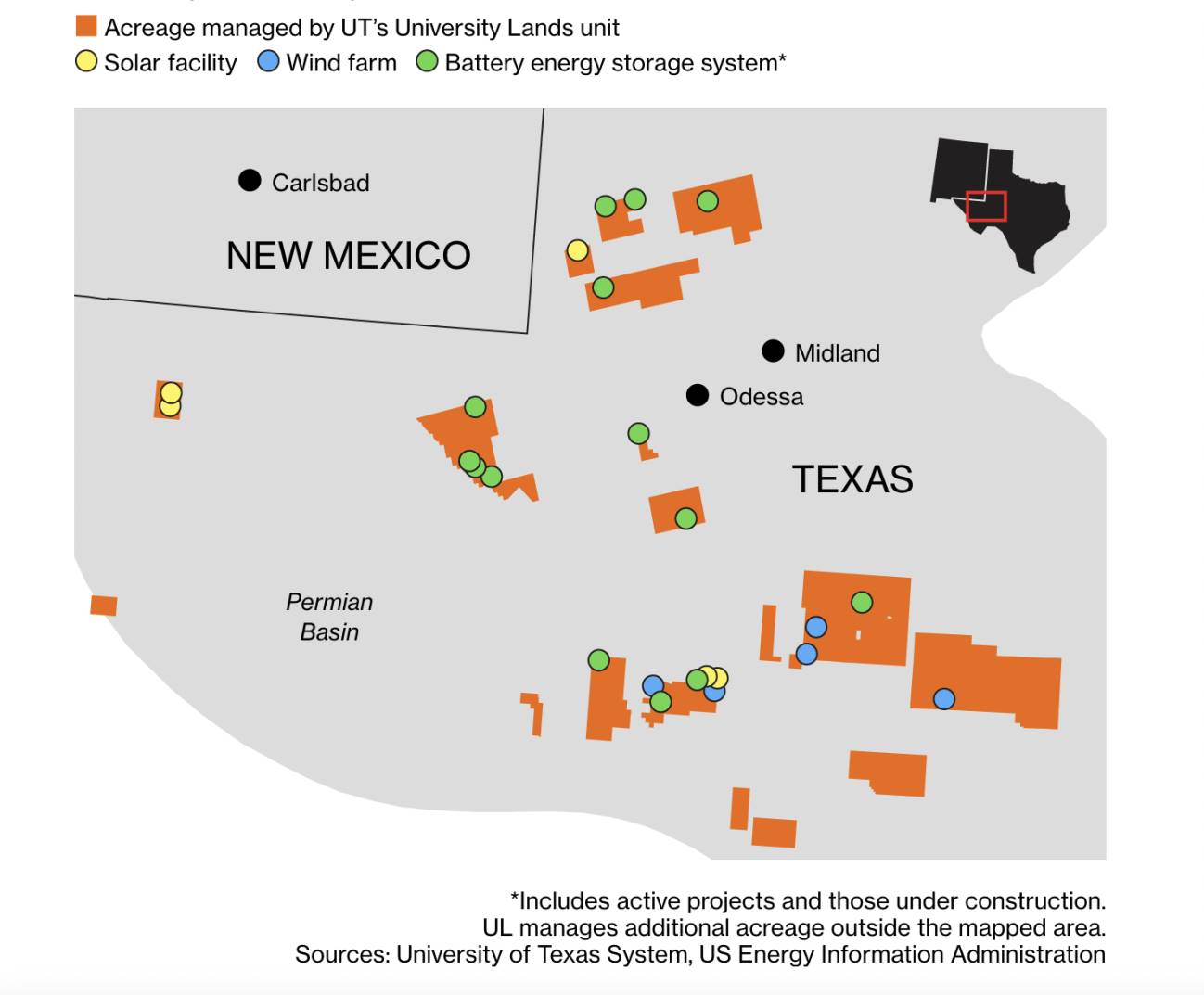
Renewable energy and energy storage projects on land managed by the University of Texas System.
All this funding flows into a fund that supports two large public universities in Texas. Two-thirds is allocated to the University of Texas, and one-third to Texas A&M University, which has a $20 billion endowment. Together, these two systems educate about 350,000 students. They also operate hospitals, including the MD Anderson Cancer Center at the University of Texas in Houston.
The state constitution mandates that oil and gas revenues must be used for capital expenditures, such as building classrooms, hospitals, and laboratories, rather than for day-to-day operations. This wealth has contributed to a construction boom, with recent allocations of $50 million for a new cancer and surgery center at the University of Texas Rio Grande Valley, $60 million to fund a "smart hospital" equipped with virtual reality labs at the University of Texas at Arlington, and $54 million to support the construction of a new site for the Mays Business School at the Texas A&M flagship campus.
New ground project revenues can be used for categories like "academic excellence" and support special programs. Although still small compared to fossil fuel revenues, non-oil and gas income has totaled $1.2 billion over the past 15 years and has been rising sharply. In November of last year, the University of Texas System announced that it would waive tuition for undergraduate students from families with incomes of $100,000 or less across all nine campuses, utilizing its endowment, non-fossil fuel funds, and other sources.
Today, such funding is particularly valuable to universities as it offers flexibility in an unfavorable environment for higher education. The Trump administration has been at odds with elite universities, cutting federal funding in areas it dislikes, including any perceived to be related to diversity, equity, and inclusion. A Republican bill is seeking to impose a tax of up to 21% on investment income from the largest private university endowments. As a public school system, the University of Texas is not among the targets of these attacks, and in any case, its per-student endowment (a government measure of wealth) is too low, at about $230,000, while Harvard's exceeds $2 million.
Given the growing population and enrollment in higher education, Texas still craves more resources. By partnering with companies like NextEra Energy (a renewable energy supplier based in Juno Beach, Florida), the University of Texas has signed five wind and five solar leasing agreements. It also has four agreements for cryptocurrency mining and 14 agreements for battery storage systems, which are either operational or under construction. Of the record $127 million in non-oil revenue last fiscal year, only $7 million came from renewable energy.
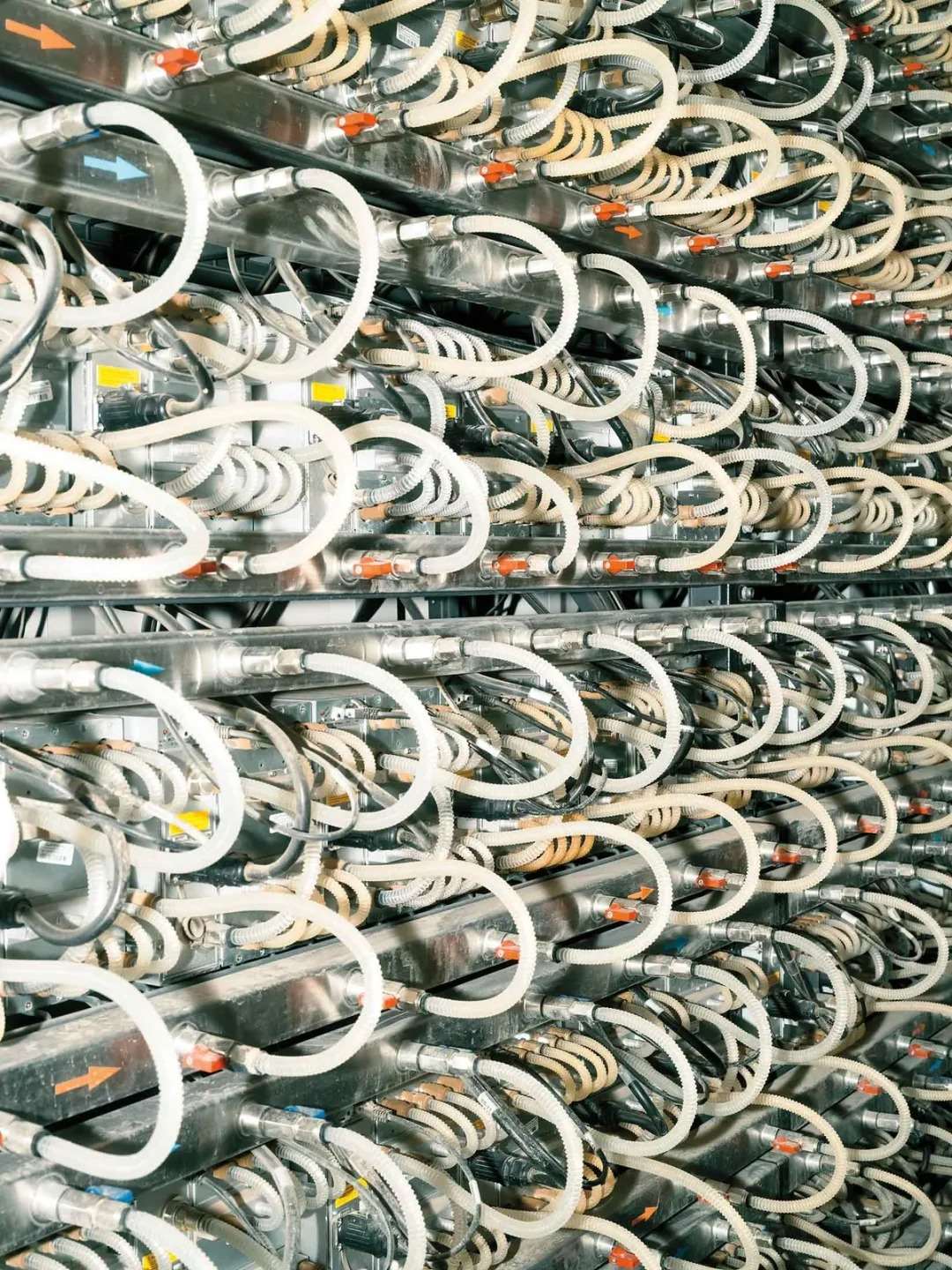
A cryptocurrency data center in Pionex, located on land leased from the University of Texas System.
The biggest benefit may come from leasing land for large data centers, which have sparked controversy due to their massive energy consumption. Tech companies have committed to spending hundreds of billions of dollars to build them to meet the computing demands of artificial intelligence. "Texas is getting attention from everyone," said Brant Bernet, senior vice president at CBRE Group, responsible for finding land for data centers for companies.
Murphy is cautiously making these deals, as he does not want to occupy too much land while giving up more profitable opportunities. "We need to maximize returns but not rush," he said, "We understand the future, and we also understand its potential."
免责声明:本文章仅代表作者个人观点,不代表本平台的立场和观点。本文章仅供信息分享,不构成对任何人的任何投资建议。用户与作者之间的任何争议,与本平台无关。如网页中刊载的文章或图片涉及侵权,请提供相关的权利证明和身份证明发送邮件到support@aicoin.com,本平台相关工作人员将会进行核查。




